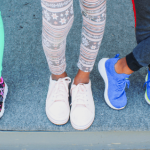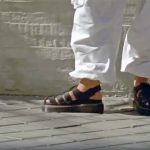Columbia Sportswear Company delighted Wall Street with their fourth quarter and full year sales and earnings report last week, sending COLM shares to a 52-week high as the company convinced analysts that they had gotten a handle on their product assortments and that they were “comfortable” with their business trend for Fall 07. Management took some cover with the “warmer global weather” to explain some of the inventory issues that remain in the market, but also pointed to the colder January that is helping clear much of that product at retail. Still, it looks as though the footwear business was the biggest issue related to weather as consumers shunned winter and snow boots and instead opted for sandals and sneakers in Q4.
COLM saw fourth quarter sales increase 15.2% to $361.8 million from $314.1 million in the year-ago period (full year numbers are available on the chart to the right). Excluding the effects of foreign currency exchange rates, fourth quarter sales would have increased 13.3% from last years quarter. Gross margins dipped 140 basis points to 41.4% of sales in Q4 from 42.8% of sales in Q4 last year, due primarily to “product line inefficiencies and increased competition, lower margin Pacific Trail and Montrail businesses, and various less significant items.” Management said that European anti-dumping duties and “certain international promotional campaigns” were partially offset by a reduction in sales of close-out product. Net income was up 4.9% to $38.4 million, or $1.06 per diluted share, for the period, compared to $36.6 million, or 97 cents per diluted share, in Q4 last year.
On a regional basis, U.S. sales increased 14.6% to $212.4 million from $185.4 million in the year-ago period, due primarily to strong Outerwear sales, which had been a sore point for the last couple of years. Mountain Hardwear and Pacific Trail also contributed to the growth for the period. Columbia did not provide an organic sales breakdown by brand. Lighter casual jackets reportedly sold through well and management sees energy around soft shell product as well. Sportswear sales were also said to be strong in the U.S. in Q4, with particular strength seen in pullovers, fleece, and bottoms. U.S. footwear sales were “soft.”
The U.S. contributed 58.4% of total company full year sales, down 20 basis points from the prior year.
In Europe, Columbia saw Q4 sales increase 10.7% to $55.7 million from $50.3 million in Q4 last year. Sales were up around 4% excluding the FX rate impact for the period. COLM said that Q4 sales were driven by Sorel and Columbia footwear with Outerwear and Sportswear also increasing during the quarter, despite a very promotional retail environment and high inventory levels of weather-dependent product at retail. While product sold through well, the weather situation is apparently impacting the pre-season order book.
For the full year, Europe represented 15.5% of overall sales versus 15.9% of sales in the prior year. Currency-neutral sales growth was pegged at 7.7% in Europe.
Canada sales increased 4.1% in the fourth quarter to $27.7 million from $26.6 million in Q4 last year, but were flat on a currency-neutral basis. Strength in Sportswear sales was offset a bit by weakness in the Sorel and Columbia boot businesses.
For the full year, Canada saw currency-neutral sales decline 2.4% from the prior year period. Canada made up 9.3% of total sales for the year, compared to 9.9% in the previous year.
The Other International business, which is primarily comprised of Japan and Korea as well as the international distributor business, posted a 27.4% increase in sales for Q4 to $66.0 million. Excluding FX rates, sales were up 24.3% for the period. The distributor business was up 45.1% for the quarter, posting revenues of $31.2 million compared to $21.5 million in the year-ago period. COLM said that the Russia and China business provided “very healthy” growth during the quarter, despite slow sell-through in their Russia distributor market. Japan sales increased 14.8% to $19.4 million in Q4, compared to $16.9 million in Q4 last year.
Management said the bulk of their inventory growth at year-end was due to the strong Spring order book, which was up 15.2%.
>>> What appears to be lost on the analysts is the effect of distribution on the Columbia brand. MTH and PT certainly hid some issues, but the core brand still faces issues in the outdoor channels. Building a bigger footprint at JC Penney and Kohls does not usually lead to long-term brand health
| Columbia Sportswear | |||
| Full Year Results | |||
| (in $ millions) | 2006 | 2005 | Change |
| Total Sales | $1,288 | $1,156 | +11.4% |
| U.S. Sales | $752.0 | $676.9 | +11.1% |
| Canada Sales | $120.2 | $114.8 | +4.7% |
| Europe Sales | $199.2 | $184.3 | +8.1% |
| Other Intl | $216.3 | $179.8 | +20.3% |
| Outerwear | $496.5 | $440.2 | +12.8% |
| Sportswear | $509.1 | $450.1 | +13.1% |
| Footwear | $219.7 | $211.3 | +4.0% |
| Accessories | $42.7 | $45.2 | -5.5% |
| Equipment | $19.7 | $9.1 | +117% |
| Gross Margin | 42.0% | 43.6% | -160 bps |
| Net Income | $123.0 | $130.7 | -5.9% |
| Diluted EPS | $3.36 | $3.36 | flat |
| Inventories* | $212.3 | $185.9 | +14.2% |
| *at year-end | |||













